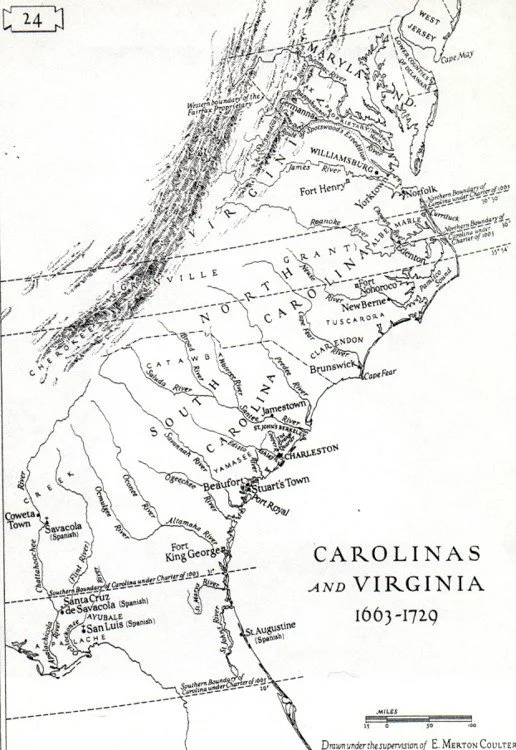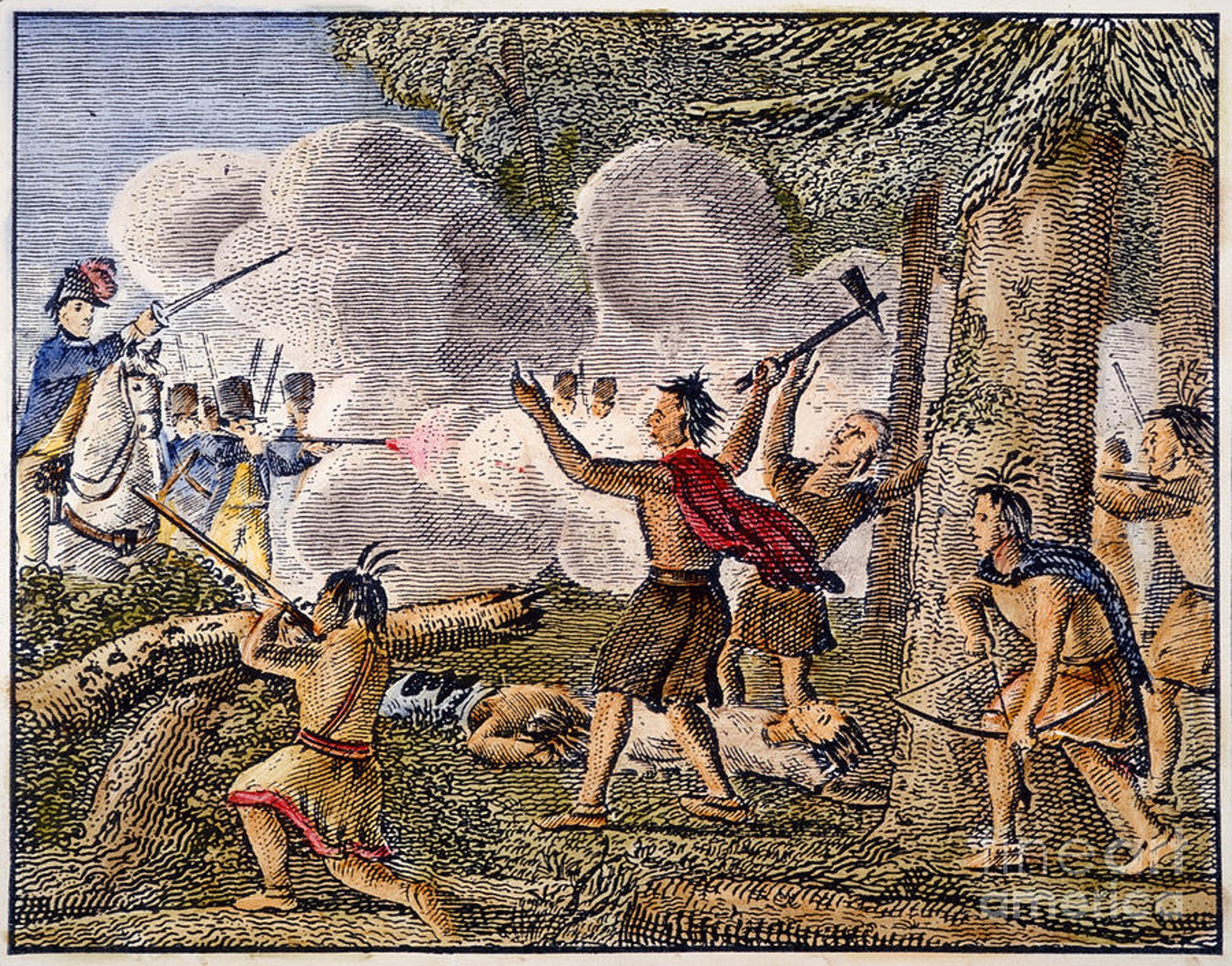Here’s a little fun fact, when you’re a newly appointed king whose father was deposed, it’s never a bad idea to reward the shit out of those who supported you, which is exactly what Charles II was doing when he was crowned king in 1660. However, by 1663, having run out of good favors to hand out, he was forced to start improvising, which mostly meant giving away land in the New World, even if he didn’t actually own it. This is how eight random nobles found themselves the owners of the unclaimed territory between Virginia and Florida, which they called Carolina, a bastardization of the Latin version of Charles’ name, because there is never not a time when it hurts to suck up to the king.
Anyways, Carolina was largely unclaimed due to the natives in the area really not being down with putting up with any bullshit, which might have had something to do with the Spanish raiding the coast for slaves for the better part of a century. Though some attempts had been made by Catholic friars from Florida to build missions in the area, all had basically ended with a bunch of dead Catholic friars. At the time, the territory was a strange mishmash of many different native cultures and peoples. Having been completely decimated by Old World diseases in the mid-sixteenth century, the various groups had somewhat recovered by 1660, but were far from as numerous as they once had been. Their old cultures lost, they had coalesced into multiple new nations. East of the Appalachians lived various Siouan and Algonquian peoples, while west of the mountain range were various Muskogean tribes and an Iroquois people called the Cherokee who had come south in the past century. It should go without saying that these various peoples didn’t always get along, and the territory was in a constantly fluctuating state of alliances, wars, and somewhat understood territorial boundaries.
Now when the eight nobles were given Carolina, the only English colonists in the area were Virginians along the northern most coast and a couple of random fur trappers. However, this quickly changed with the foundation of the colony of Charleston in 1670 by English settlers from Barbados, who founded the colony for one specific purpose, the Native American slave trade. Now it should probably be mentioned that slavery was not a new thing in what would become the southeastern United States. The tribes in the area had practiced slavery for centuries, and when the Spanish in Florida began offering European goods for slaves in the late sixteenth century, the various tribes were more than happy to attack each in order to create the supply to meet the demand.
At first, the English mostly traded with whatever tribes were willing to trade slaves to them, which worked for awhile until some of the tribes being attacked decided enough was enough already. One of the most negatively affected tribes were the Westo, a group of Iroquois speaking refugees who had fled south from the Iroquois Confederacy. In 1674, the Westo beat the shit out of the tribes trading with the English, to which the English responded by shrugging and starting to trade with the Westo instead. To aid their new trading partners and ensure a steady supply of slaves, the English began giving the Westo guns, which gave them a decided edge over their rivals. However, this monopoly on trade only lasted until 1679, when a larger group called the Shawnee, always fleeing south from the Iroquois Confederacy, moved into the area. Deciding that maybe having just one source of slaves wasn’t all that great, the English began selling guns to the Shawnee as well, which pissed off the Westo so much that they attacked the Shawnee and English. As one can probably imagine, this did not work out well, and within a year the Westo pretty much ceased to exist, all of them enslaved and shipped to Barbados.
For the next several decades the Native American slave trade was largely dominated by the Algonquian speaking Shawnee, the Muskogean speaking Yamasee and Cherokee, and the Iroquoian speaking Tuscarora. Armed with English guns, these three tribes attacked the various small Muskogeean tribes to the west of the Spanish allied tribes to the south. However, by 1710, the Spanish allied tribes in Florida were largely gone, and the smaller Muskogean tribes to the west had gathered together into the Creek Confederacy, making them much harder to attack. As a result, the Cherokee, Yamasee, and Tuscarora began attacking the Shawnee, who quickly tiring of such shit began trading with the French to get even more guns, which led to their primary source of guns, the English, cutting them off, which resulted in them fleeing the area back north in 1710. With the Shawnee gone, the Cherokee and Yamasee then began targeting the Tuscarora, who also tiring of such shit, tried attacking the English, which did not work out well, leading the tribe being almost completely enslaved wiped out by 1715. You can probably guess what happened next. The Cherokee began targeting the Yamasee, who retaliated against both the English and Cherokee, but were completely enslaved and wiped out 1717.
The Yamasee War in many ways marked the end of the Native American slave trade. The bloodshed of the past decade, the wide availability of slaves from Africa, and the increasing European demand for deer skins, all convinced the Carolina colonists that the Native American slave trade just wasn’t worth the time and effort. After all, by that time Charleston had grown into a major port, surrounded by rice and indigo plantations worked by African slaves. By 1700, the Carolina colony was home to some 15,000 people, but its two halves were very different. While the southern half was increasingly plantation oriented, the northern half was more small farms and sparsely populated rural areas. As a result, the colony split into South Carolina and North Carolina in 1710. As for the original owners, they sold their rights to the colony back to the king of England in 1729, most having never left England to go see what they owned.

